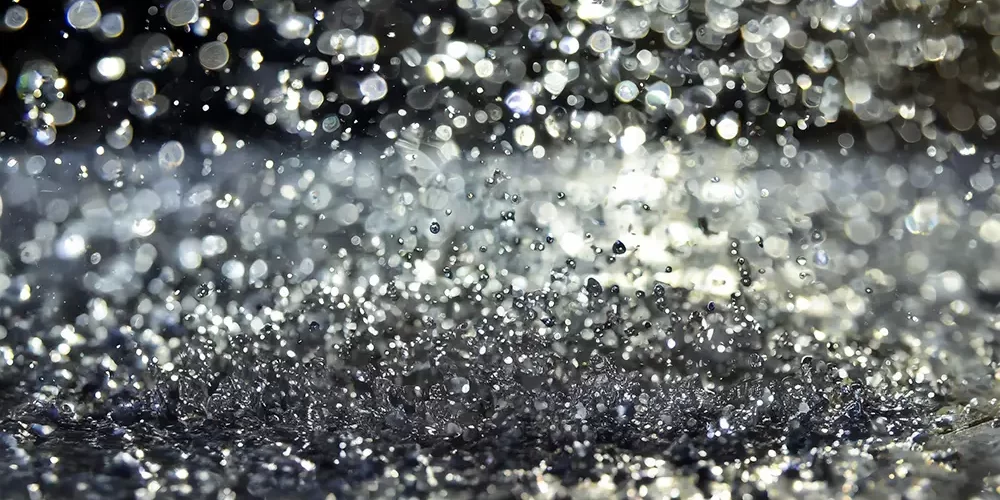Aluminium, the third most abundant element in the Earth’s crust, is a versatile metal with various applications ranging from industrial manufacturing to household items.
Despite its prevalence, the interaction of aluminium with water, its subsequent environmental impact, and health effects require careful consideration, especially when present in significant amounts in our aquatic ecosystems.
Aluminium reacts with water in several forms. In its metallic state, aluminium develops a thin oxide layer that inhibits further reaction. However, when this layer is damaged, aluminium can react with water to release flammable hydrogen gas. Compounds such as aluminium chloride hydrolyse in water, creating a mist as hydrochloric acid forms upon contact with water vapour.
In aqueous environments, aluminium exists predominantly as Al3+ ions under acidic conditions and as Al(OH)4- in neutral to alkaline settings. The solubility of aluminium compounds like aluminium oxide and hydroxide is low, but some, like aluminium sulphate, are highly soluble.
Environmental Presence of Aluminium
 Aluminium naturally enters water systems through the weathering of minerals in rocks such as feldspar and bauxite, finding its way into clay minerals and bodies of water. Human activities such as mining, manufacturing, and recycling of aluminium products also contribute to its presence in water. Aluminium is utilised in various forms for its physical properties, including in construction, transportation, and as a component in water treatment processes for phosphate removal.
Aluminium naturally enters water systems through the weathering of minerals in rocks such as feldspar and bauxite, finding its way into clay minerals and bodies of water. Human activities such as mining, manufacturing, and recycling of aluminium products also contribute to its presence in water. Aluminium is utilised in various forms for its physical properties, including in construction, transportation, and as a component in water treatment processes for phosphate removal.
Environmental Impact of Aluminium
 Aluminium concentrations in natural waters are typically low. However, they can rise due to acid rain, which dissolves soil minerals, and industrial waste. At low pH values, aluminium becomes increasingly soluble, which can be detrimental to both aquatic and terrestrial life. High levels of aluminium can be toxic to fish and inhibit plant growth by affecting root function and nutrient intake.
Aluminium concentrations in natural waters are typically low. However, they can rise due to acid rain, which dissolves soil minerals, and industrial waste. At low pH values, aluminium becomes increasingly soluble, which can be detrimental to both aquatic and terrestrial life. High levels of aluminium can be toxic to fish and inhibit plant growth by affecting root function and nutrient intake.
Health Effects of Aluminium
In humans, daily intake of aluminium is around 5 mg, of which a tiny fraction is absorbed, indicating low acute toxicity. However, high levels of aluminium exposure can have adverse health effects, such as nerve damage, particularly in individuals with kidney impairments. While a connection between aluminium intake and Alzheimer’s disease has been hypothesised, conclusive evidence is still under review.
Advanced Water Purification with Chlorine Dioxide
Ensuring the safety of water from excess aluminium is crucial. Traditional treatments like ion exchange are effective but may be limited by varying water conditions. Scotmas introduces Chlorine Dioxide (ClO2), a powerful alternative that efficiently oxidises aluminium, allowing for its safe removal and ensuring levels meet health standards.
Scotmas’s precise ClO2 dosing systems control the treatment process, reducing aluminium below the recommended limits. This method is not only effective but also environmentally friendly, positioning Scotmas as a leader in innovative water purification solutions.
For more information on Scotmas’s Chlorine Dioxide solutions and their benefits for water treatment, please contact us. Our team is ready to support your water quality goals with advanced technology and expertise.






